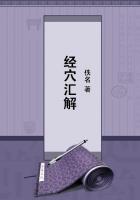Researches on frictional electricity: induction: conduction: specific inductive capacity: theory of contiguous particles.
The burst of power which had filled the four preceding years with an amount of experimental work unparalleled in the history of science partially subsided in 1835, and the only scientific paper contributed by Faraday in that year was a comparatively unimportant one, 'On an improved Form of the Voltaic Battery.' He brooded for a time: his experiments on electrolysis had long filled his mind; he looked, as already stated, into the very heart of the electrolyte, endeavouring to render the play of its atoms visible to his mental eye. He had no doubt that in this case what is called 'the electric current' was propagated from particle to particle of the electrolyte; he accepted the doctrine of decomposition and recomposition which, according to Grothuss and Davy, ran from electrode to electrode. And the thought impressed him more and more that ordinary electric induction was also transmitted and sustained by the action of 'contiguous particles.'
His first great paper on frictional electricity was sent to the Royal Society on November 30, 1837. We here find him face to face with an idea which beset his mind throughout his whole subsequent life,--the idea of action at a distance. It perplexed and bewildered him. In his attempts to get rid of this perplexity, he was often unconsciously rebelling against the limitations of the intellect itself. He loved to quote Newton upon this point; over and over again he introduces his memorable words, 'That gravity should be innate, inherent, and essential to matter, so that one body may act upon another at a distance through a vacuum and without the mediation of anything else, by and through which this action and force may be conveyed from one to another, is to me so great an absurdity, that I believe no man who has in philosophical matters a competent faculty of thinking, can ever fall into it. Gravity must be caused by an agent acting constantly according to certain laws; but whether this agent be material or immaterial, I have left to the consideration of my readers.'
Faraday does not see the same difficulty in his contiguous particles.
And yet, by transferring the conception from masses to particles, we simply lessen size and distance, but we do not alter the quality of the conception. Whatever difficulty the mind experiences in conceiving of action at sensible distances, besets it also when it attempts to conceive of action at insensible distances. Still the investigation of the point whether electric and magnetic effects were wrought out through the intervention of contiguous particles or not, had a physical interest altogether apart from the metaphysical difficulty. Faraday grapples with the subject experimentally.
By ****** intuition he sees that action at a distance must be exerted in straight lines. Gravity, he knows, will not turn a corner, but exerts its pull along a right line; hence his aim and effort to ascertain whether electric action ever takes place in curved lines.
This once proved, it would follow that the action is carried on by means of a medium surrounding the electrified bodies. His experiments in 1837 reduced, in his opinion, this point of demonstration.
He then found that he could electrify, by induction, an insulated sphere placed completely in the shadow of a body which screened it from direct action. He pictured the lines of electric force bending round the edges of the screen, and reuniting on the other side of it; and he proved that in many cases the augmentation of the distance between his insulated sphere and the inducing body, instead of lessening, increased the charge of the sphere. This he ascribed to the coalescence of the lines of electric force at some distance behind the screen.
Faraday's theoretic views on this subject have not received general acceptance, but they drove him to experiment, and experiment with him was always prolific of results. By suitable arrangements he placed a metallic sphere in the middle of a large hollow sphere, leaving a space of something more than half an inch between them.
The interior sphere was insulated, the external one uninsulated.
To the former he communicated a definite charge of electricity.
It acted by induction upon the concave surface of the latter, and he examined how this act of induction was effected by placing insulators of various kinds between the two spheres. He tried gases, liquids, and solids, but the solids alone gave him positive results.
He constructed two instruments of the foregoing description, equal in size and similar in form. The interior sphere of each communicated with the external air by a brass stem ending in a knob.
The apparatus was virtually a Leyden jar, the two coatings of which were the two spheres, with a thick and variable insulator between them. The amount of charge in each jar was determined by bringing a proof-plane into contact with its knob and measuring by a torsion balance the charge taken away. He first charged one of his instruments, and then dividing the charge with the other, found that when air intervened in both cases the charge was equally divided.















